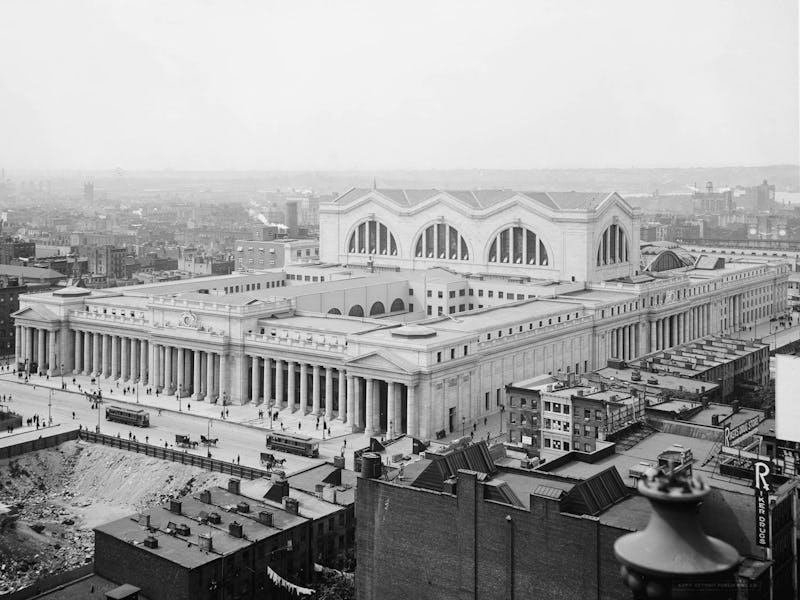7 Great American Buildings That Looked Like the Future Until They Were Destroyed
Landmarks are landmarks until they aren't.

In the 20th century, humans got really good at erecting architectural icons at speed. Cranes, elevators, prefabrication, and power tools were among the breakthroughs that enabled this advance. But as construction got easier, so too did destruction. Humans built architectural triumphs — from the original Penn Station to the Detroit’s Old City Hall — then promptly tore them down.
There’s something profound about this behavior. Most humans, either consciously or unconsciously, tend to spend their lives attempting to immortalize themselves. It’s irrational: in the as-is-said grand scheme of things, very little endures. In the grandest scheme, nothing endures. Often, people favor some creative outlet as a means to this immortality. They write a novel, paint a masterpiece, record an album.
But the most physical instantiation of this desire is, arguably, architecture. Designing and building a home is impressive enough. Designing something open to the public is considerably harder. In bare form, a train station merely provides a place for humans to come and go. In grandiose form, a train station signifies much more. Public spaces can become both physical and emotional landmarks. These qualities grow all the more pronounced when the public space in question is particularly beautiful.
Below are seven destroyed architectural triumphs in the United States. There are countless more in the U.S., and an overwhelming number around the planet. The destruction of some, like Penn Station and Garrick Theater, gave rise to architectural preservation movements. Good thing too — when we can’t remember what we wanted the world to look like, we struggle to understand the landscape we’ve inherited.
Pennsylvania Station
Interior.
Location: New York, New York
Lifespan: 53 years (1910 - 1963)
Architect: Charles McKim
What Replaced It: Madison Square Garden & Penn Station
Broad Street Station, Philadelphia
Exterior.
Location: Philadelphia, Pennsylvania
Lifespan: 72 years (1881 - 1953)
Architects: Wilson Brothers & Company; Frank Furness
What Replaced It: Penn Center
Detroit City Hall
Exterior.
Location: Detroit, Michigan
Lifespan: 90 years (1871 - 1961)
Architect: James Anderson
What Replaced It: One Kennedy Square
Garrick Theater
Interior.
Location: Chicago, Illinois
Lifespan: 70 years (1891 - 1961)
Architects: Louis Sullivan, Dankmar Adler
What Replaced It: “Retail Space”
Chicago Coliseum
Exterior
Location: Chicago, Illinois
Lifespan: 82 years (1900 - 1982)
Architect: Charles M. Palmer
What Replaced It: Coliseum Park
Waldorf-Astoria
Exteriors.
Location: New York, New York
Lifespan: 36 years (1893 - 1929)
Architect: Henry Janeway Hardenbergh
What Replaced It: Empire State Building
Marlborough-Blenheim Hotel
Exterior.
Location: Atlantic City, New Jersey
Lifespan: 73 years (1906 - 1979)
Architect: Will Price
What Replaced It: BALLY’S